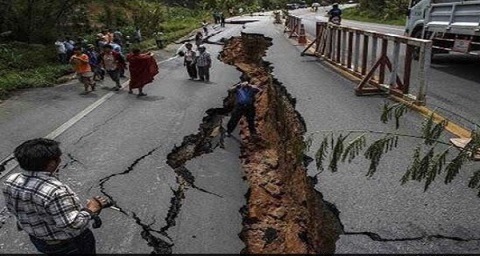
Submitted to potential partners in Nepal /India
PROPOSED PROJECT
We plan to use our past experience to provide community based mental health support to the seriously affected Nepalese community We have found a few local partners but are looking for more especially those who can help fund the project. Whoever provides the funds will be provided part or complete ownership of the various components of the project based on the contribution provided. These can be from
International NGOs
Government bodies
Local NGOs some already identified but many more locations require support.
Hospitals willing to provide care for the victims BPKIHS is already identified – institutions closer to the affected areas may also be considered
Healthcare organizations with long term goals
About SATHI
S.A.T.H.I. (Society for Administration of Telemedicine and Health Care Informatics) ? a non profit organization – is a group consisting of like minded highly trained and skilled Medical (mostly from AIIIMS, New Delhi), Information Technology as well as Tele Communication Professionals who think that
Telemedicine can go a long way in providing affordable and quality healthcare to each and every person of our country. All of us are doing this as a voluntary effort aside from their professional activities. The Healing Touch Project by SATHI), after the tsunami in Tamilnadu was extremely successful. It provided Tele-mental Health Support to the victims – in just 2 centres there were over 250 tele-consults with prevention of a few suicides! The success was related to the meticulous preparatory work which went behind it as well as the standardized processes and protocols followed. Not only was the project successful but it continues to provide relief after our handover to the local partners long after SATHI left the fray (see www.scarfindia.org/tele.html
SATHI has initiated a project similar to its Healing Touch Project with the strong belief that it can help the quake affected areas in Nepal. The disaster can be an opportunity to help Rural Health care on a long term as the project once running can continue to provide health support on long term basis, besides provide help in preparation for future disasters.
2. After /during the above, involve the NGOs and Health Workers in the affected areas who are willing to partner by
a. Assessing resources and capacities.
b. Getting the persons with the right skills e.g. in using Computers, Networking as well as offering community services
c. Orientation on specific tasks required
d. Social Marketing
3. Checking other support structures like Location/Connectivity/Funding. Capacity of local volunteers and health workers, Level of Community participation etc.
4. Information/close co-operation with Government and other stakeholders
5. Which all specialties to be covered and location/ support of the expert centres
6. Language Issues ? since Hindi is not widely spoken, the expert unit has to be in Nepal (BPKIHS identified as a result of a personal survey – though Ideally an area where physical reach is possible is generally preferred by the local community
7. Creation of MOUs between various partners
8. Installation of equipment9. Capacity Building ? this will include training on
a. Operation of the telemedicine system
b. Solving Connectivity issues
c. Identifying persons with high likelihood of mental problems ( to be done by the partnering expert centre i.e. BPKIHS)
d. Training and orienting the specialist doctors at partner hospital on providing a tele- consults10. Testing/Implementation Maintenance
a. Designing the telemedicine room ? lighting, position of camera, stand, speakers etc
b. Choosing the right connectivity
c. Being present during initial online meetings
d. Online prescribing and pharmacy
11. Troubleshooting
12. Evaluating outcomes
13. Creation of replicable model as part of disaster planning
Opportunity to work long- term in a disaster area
Garner experience on disaster management
o Showcase commitment with clear cut and continued evidence of providing help to the disaster affected
o Mobile components and trained staff can be transferred for needs elsewhere
o A running project can be adapted quickly for emergencies so the organization will be disaster ready
o We assure our continued assistance for the same
Telemedicine in normal times means better healthcare access for the rural population
On 15th June, a visit was made to District Nuwakote, Village Gherkutal3, this is the 3rd most affected district.
A meeting was held in Kathmandu on 16th June in the offices of Dr Dinesh Tripathi, Lawyer, Supreme Court of Nepal and secretary to the Nepal Chapter of WVAP (World Vision Action Plan). There were around 60 persons attending, far exceeding the capacity of the hall. Here after an introduction by Mr Tripathi, Dr Gogia gave a presentation on what is Telemedicine and how it can help in the quake affected areas. This was followed by a prolonged general discussion on the experience of Telemedicine in Nepal and the future course of action. Though the previous experience had gaps, it was agreed that the current approach of SATHI as well as the positive outcomes they showcased could be of help to the Quake victims.
The next day Ms Gurinder Kaur travelled with Mr Tripathi and Mr Tara Bahadur from Samudayak Sarathi a local NGO working and running a health centre village Bahrabise in Sindhupal Chowk, the most affected area. It was felt that a project would be useful there. A 3rd centre was also planned in Balaju colony, a deeply affected area in the suburbs of Kathmandu.
Simultaneously, on the same day, Dr S B Gogia, travelled to BP Koirala Institute of Health Sciences, (BPKIHS) Dharan, eastern Nepal to try to gather a group of expert psychiatrists who could provide Telemental support to the population in the affected areas. After discussions with Prof Das, the Vice Chancellor, as well as other senior functionaries including the Head of the Psychiatry department, BPKIHS offered to setup tele-counselling clinics in its campus, as well as to provide any other support as required.
A second trip was done in mid July wherein persons from the TElemdicine team in Dharan were identified as local project managers and additional two peripheral centres (Balaju and Okhaldunga) confirmed with identification of Local NGOs
In Summary
The SATHI team has made two visits to Nepal . and through those, 4 locations, local partners have been identified
1. Gherkutar
2. Bahrabise
3. Balaju
4. Okhaldhunga
Expert Provider Department of Psychiatry, B P Koirala Institute of Health Sciences (bpkihs.edu) has kindly consented to deliver mental health support as well as train the local volunteers on how to identify the at risk patients.
SATHI shall be doing the training of the Local health workers as well Employed Telemedicine technicians to conduct the actual sessions
Ownership of the centres shall be of the funders or the local agency depending on the understanding they develop with the funding organization. Since it is a big project we are open to options of crowd funding
The project can start after initial training and further orientation.
as well as perusal of previous data. Psychiatrists /Psychoanalysts and other experts see the patient sitting in their office and give advice. Advance availability of medicine locally will allow for faster disbursement.







